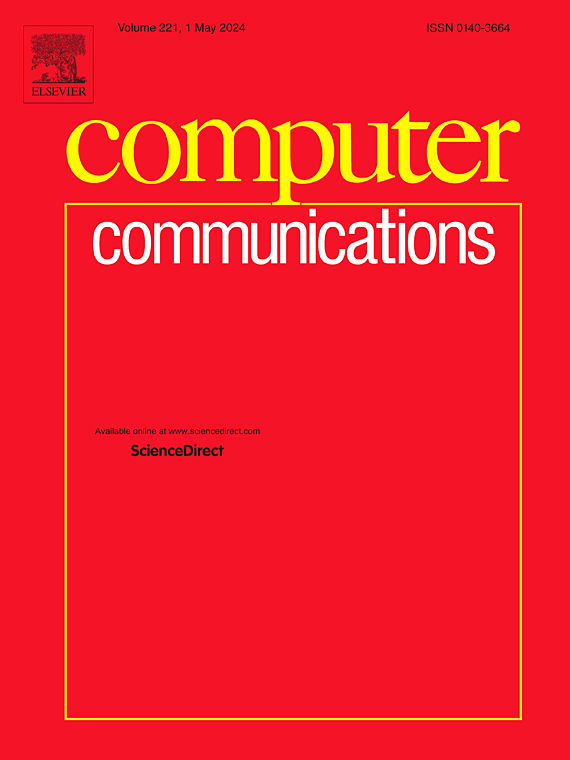Aegis:基于云边缘计算的多灾难人群疏散模型,使用改进的深度强化学习
IF 4.5
3区 计算机科学
Q1 COMPUTER SCIENCE, INFORMATION SYSTEMS
引用次数: 0
摘要
人群疏散是城市灾害管理的一项重要措施,可以为受害者提供有效的疏散指导,保障他们的生命安全。然而,大多数现有的方法都是针对单灾难场景设计的,忽略了灾难经常同时在多个地点爆发的事实。为此,提出了一种基于云边缘计算和改进深度强化学习的多灾种人群疏散模型Aegis。首先,将多灾种人群疏散问题建模为考虑掩体负载平衡和危险区域穿越问题的多目标优化问题;其次,本文提出了一种改进的深度强化学习模型来解决这一问题。该模型利用注意机制、门控循环单元(GRU)和图注意网络(GAT)来实现原始数据的嵌入。然后,该模型通过基于注意力的解码器将嵌入的信息映射到疏散计划中。采用策略梯度法对模型参数进行优化。第三,Aegis还引入了云边缘计算框架,该框架具有云、边缘和终端三层架构。这种设计允许将模型无缝集成到智慧城市管理中。实验结果表明,Aegis在降低疏散成本和优化掩体负荷方面优于其他基线方法。在4种不同尺度的实验中,Aegis分别降低了58.87%、64.56%、65.59%和67.79%的疏散成本。本文章由计算机程序翻译,如有差异,请以英文原文为准。

Aegis: A cloud-edge computing based multi-disaster crowd evacuation model using improved deep reinforcement learning
Crowd evacuation is an important measure for urban disaster management, which can provide effective evacuation guidelines for victims and safeguard their lives. However, most of existing methods are designed for single-disaster scenarios, ignoring the fact that disasters often erupt in multiple locations simultaneously. Thus, a multi-disaster crowd evacuation model, Aegis, is proposed based on cloud-edge computing and improved deep reinforcement learning. Firstly, the multi-disaster crowd evacuation problem is modeled as a multi-objective optimization problem, which considers shelter load balancing and dangerous area crossing issues. Secondly, an improved deep reinforcement learning model is proposed in this paper to solve it. The model utilizes Attention mechanism, Gated Recurrent Unit (GRU) and Graph Attention Network (GAT) to obtain the embedding of raw data. Then, the model maps the embedded information to the evacuation plan by an attention-based decoder. The model parameters are optimized using a Policy Gradient method. Thirdly, a cloud-edge computing framework is also introduced for Aegis, featuring a three-tier architecture that includes cloud, edge, and terminal levels. This design allows for the seamless integration of the model into smart city management. The experimental results show that Aegis outperforms other baseline methods, especially in reducing evacuation costs and optimizing shelter loads. In experiments with four different scales, Aegis reduces the evacuation costs by 58.87 %, 64.56 %, 65.59 %, and 67.79 %.
求助全文
通过发布文献求助,成功后即可免费获取论文全文。
去求助
来源期刊

Computer Communications
工程技术-电信学
CiteScore
14.10
自引率
5.00%
发文量
397
审稿时长
66 days
期刊介绍:
Computer and Communications networks are key infrastructures of the information society with high socio-economic value as they contribute to the correct operations of many critical services (from healthcare to finance and transportation). Internet is the core of today''s computer-communication infrastructures. This has transformed the Internet, from a robust network for data transfer between computers, to a global, content-rich, communication and information system where contents are increasingly generated by the users, and distributed according to human social relations. Next-generation network technologies, architectures and protocols are therefore required to overcome the limitations of the legacy Internet and add new capabilities and services. The future Internet should be ubiquitous, secure, resilient, and closer to human communication paradigms.
Computer Communications is a peer-reviewed international journal that publishes high-quality scientific articles (both theory and practice) and survey papers covering all aspects of future computer communication networks (on all layers, except the physical layer), with a special attention to the evolution of the Internet architecture, protocols, services, and applications.
 求助内容:
求助内容: 应助结果提醒方式:
应助结果提醒方式:


